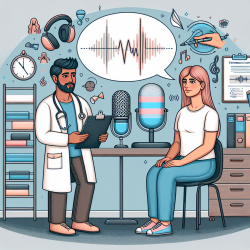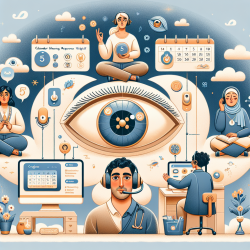As a Special Education Director, navigating the complexities of providing comprehensive support services in our schools, I've seen firsthand the challenges and triumphs of integrating technology into our approach. The landscape of mental health services within educational settings is evolving, and telehealth has emerged as a beacon of innovation and accessibility. In this exploration, we'll delve into how telehealth is reshaping the provision of mental health services in schools, making it more inclusive, efficient, and impactful for students in need.
Telehealth, the delivery of health services via digital and telecommunication technologies, has seen a meteoric rise across various sectors, including education. This advancement offers a promising solution to one of the most pressing issues we face today: the shortage of speech therapy and mental health professionals in schools. By bridging the gap between demand and supply, telehealth not only addresses staffing shortages but also enhances the quality of care provided to our students.
The Advantages of Telehealth in Schools
- Accessibility: Telehealth breaks down geographical barriers, making it easier for students in remote or underserved areas to access specialized mental health services.
- Flexibility: Scheduling becomes more adaptable, allowing services to be provided at times that are most convenient for students and their families.
- Consistency: Through telehealth, students can maintain regular sessions with their therapists, ensuring continuity of care even during school breaks or unforeseen circumstances.
- Engagement: Digital platforms can be more engaging for students, utilizing interactive tools and resources that enhance the therapeutic experience.
Despite its benefits, the integration of telehealth into school settings is not without its challenges. Concerns about privacy, the effectiveness of online versus in-person therapy, and ensuring equitable access to technology are valid. However, with thoughtful implementation and ongoing evaluation, these challenges can be navigated successfully.
Implementing Telehealth: A Step-by-Step Approach
To successfully integrate telehealth services into school-based mental health programs, several key steps should be considered:
- Assessment of Needs: Understanding the specific needs of your student population is crucial. This involves evaluating the types of services required, such as speech therapy, counseling, or behavioral support.
- Technology Infrastructure: Ensuring that both the school and the students have access to the necessary technology and internet connectivity is fundamental.
- Partnering with Providers: Selecting the right telehealth service providers, like TinyEYE, who specialize in educational settings and offer tailored services for schools, is essential.
- Training and Support: Providing training for staff, students, and parents on how to use telehealth platforms effectively is key to the successful adoption of these services.
- Policy and Compliance: Developing clear policies regarding telehealth services, including privacy, consent, and data security, is imperative to ensure legal and ethical compliance.
The role of technology in expanding the reach and effectiveness of mental health services in schools cannot be overstated. As we move forward, it's clear that telehealth will play a pivotal role in our efforts to provide equitable, high-quality mental health support to all students. By embracing this innovative approach, we can overcome staffing shortages, break down barriers to access, and create a more inclusive and supportive educational environment for every student.
In conclusion, the journey towards integrating telehealth into school-based mental health services is both exciting and challenging. It requires a collaborative effort among special education directors, mental health professionals, educators, and technology partners. However, the potential benefits for our students—improved access, engagement, and outcomes—are too significant to ignore. As we continue to explore and expand the use of telehealth in our schools, we remain committed to creating a future where every student has the support they need to thrive, both academically and emotionally.










